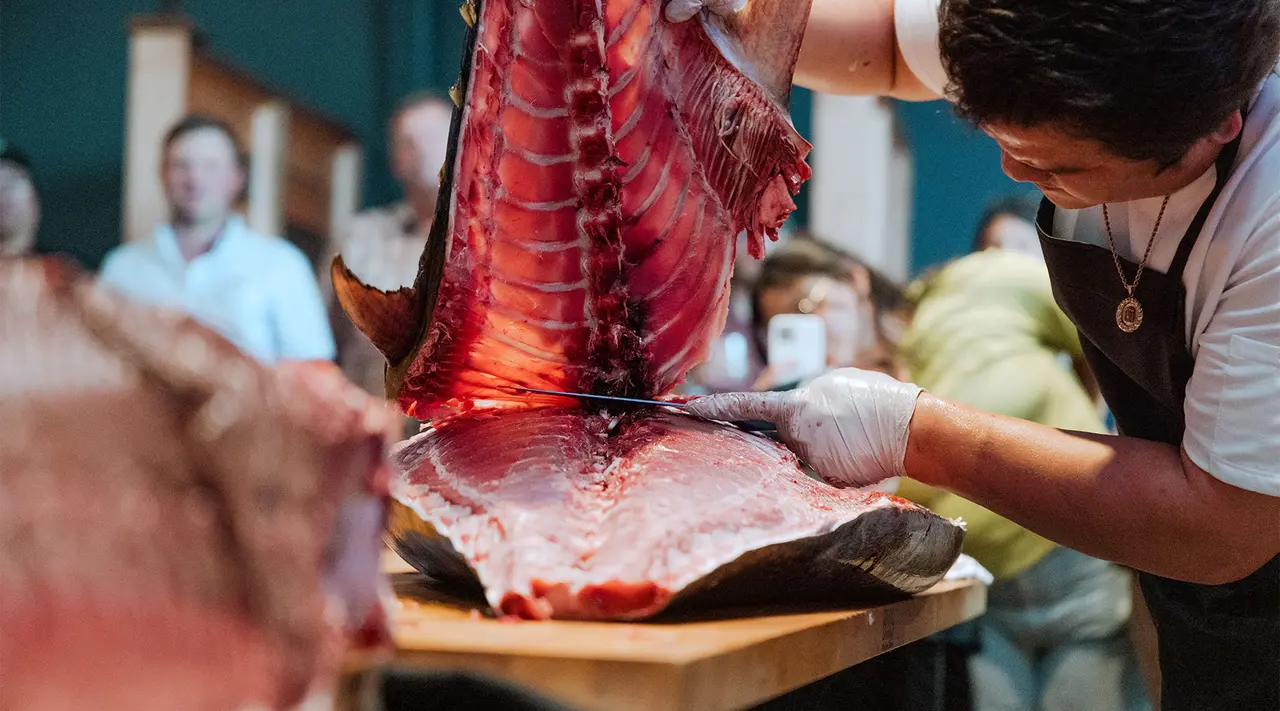The first step in making world-class sushi lies in selecting the best fish. And the first step in selecting the best sushi-grade fish lies in knowing what your fishmonger knows: how to determine what is fresh, local, and even sustainable when you’re at the market. If the waters surrounding sushi-grade fish feel challenging to navigate, we’re here to help. Here, Steven Wong, fishmonger and second-generation owner of New York’s Aqua Best, offers up some best practices for shopping for and preparing sushi-grade fish.
Look for the Telltale Signs
“Look at the eyes of the fish first,” Wong says. Buyers should look for fish with “very clear eyes” that protrude outward. At the market, touch your fish—both the scales and the flesh. Fresh fish, Wong says, should be firm to the touch. “When you do feel that fish is soft, it’s not as fresh as you want it to be,” he says. You can also use your nose to help determine the freshness of the fish you’re considering. You can purchase whole fish, of course, but, in the case of larger fish, like tuna, fillets are ok, too. Fresh fish, Wong says, should smell like the ocean. “When a fish does get on the older side, they will have a pungent, more rotten smell to it,” he says. Unsavory odors should tip you off: avoid, avoid, avoid.
Know Your Monger
One of the best ways to guarantee that the fish you’re buying is top-quality is to develop a relationship with your purveyor, Wong says. “Your local supermarket—especially in very sparsely populated areas—most of them tend to use frozen fish,” he adds. “Most of them also tend to rely on big processors.” Consumers should lean into specialty markets when shopping for sushi-grade fish. A fish shop, he says, should be a place where you can ask questions and get answers to them. “Don’t be afraid to ask questions. Ask when and where was this fish caught, is it fresh, is it sustainable, is this fit for sushi consumption? A reputable fishmonger will actually have answers for you and can answer you quickly.”
Stay Sustainable
With sushi—as with any other kind of fish shopping—it’s important to keep sustainability in mind. Wong suggests referencing the Monterey Bay Aquarium’s Seafood Watch list, which offers advice as to which species are recommended for consumption and which should be avoided. Some of the species the Seafood Watch list recommends eating include bluefish, abalone, pompano, Arctic char, and salmon. If you’re confused about sustainability, Wong says, just ask your fishmonger.
Know How to Prepare it
Although, as Wong says, most high-quality fish can be eaten raw, consumers need to know how to battle possible food-borne illnesses, like parasites. Aside from tuna, he says, all fish must be frozen after it is caught at negative 20 degrees for 48 hours, which kills off anything that can be harmful to the human body. When defrosting fish from this deep-freeze at home, Wong says, make sure to take your time. Defrosting can take place over the course of 12 to 24 hours, in the refrigerator. “The texture of the fish will change, according to how fast or how slow you will bring the temperature of the fish up to be prepared,” he says. He advises against defrosting fish in water, which he says can dilute its natural flavors and compromise its firmness. “Sushi’s not just a flavor,” he says. “It’s also a texture.”























